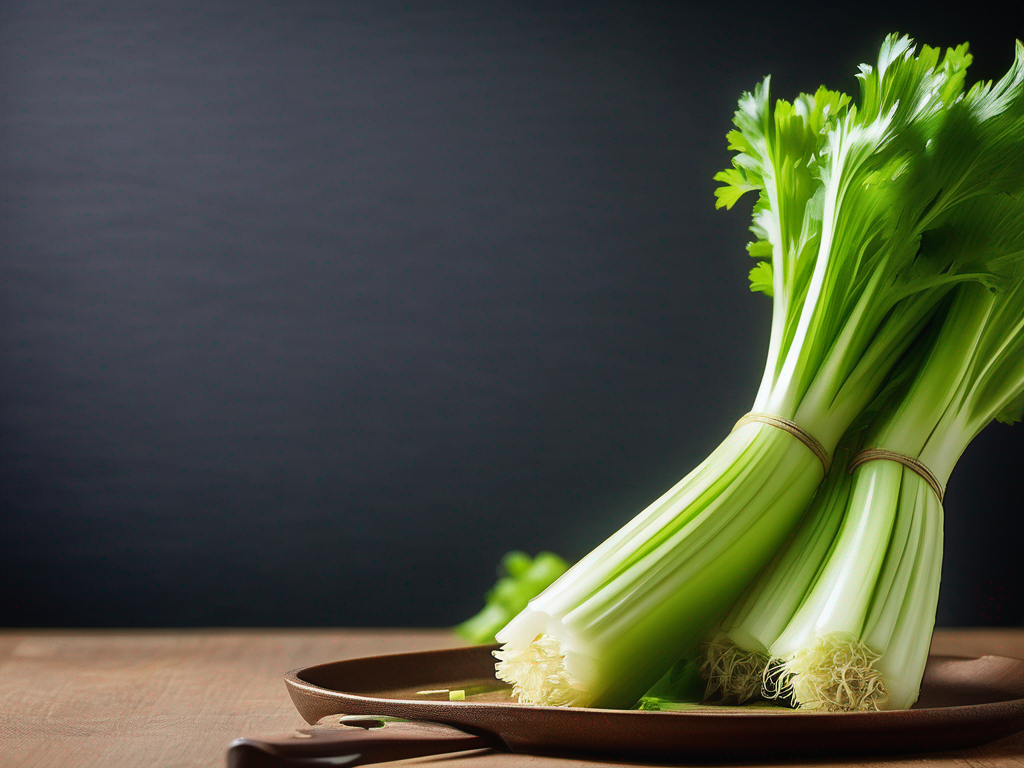
How to Tell if Celery Stalks Have Gone Bad
Get Your Free Food Safety Cheat Sheet
30 most common foods with instant answers. Print it and stick it on your fridge—completely free!
How to Tell if Celery Stalks Have Gone Bad
Celery stalks are a versatile and healthy vegetable that can be enjoyed raw, cooked, or as a crunchy snack. However, like any fresh produce, celery can spoil if not stored properly or if left for too long. In this blog post, we will discuss how to tell if celery stalks have gone bad, and provide practical tips on how to store them to maximize their freshness and flavor. (Celery stalks)
Signs of Spoiled Celery Stalks
When it comes to determining if celery stalks have gone bad, there are several key indicators to look out for. Here are some common signs that your celery may be past its prime:
1. Discoloration
- Yellowing: If you notice that the celery stalks have turned yellow or brown in color, it is a clear sign that they are starting to spoil.
- Dark Spots: Dark spots or mold on the surface of the celery indicate that it is no longer safe to eat.
2. Slimy Texture
- When celery stalks become slimy to the touch, it is a sign that bacteria have started to break down the vegetable, making it unsafe for consumption.
3. Unpleasant Odor
- Spoiled celery will emit a foul or rancid odor, indicating that it has started to rot.
4. Wilting
- Celery stalks that have become limp and droopy are past their prime and should be discarded.
Proper Storage Tips for Celery Stalks
To prevent your celery stalks from spoiling prematurely, it is essential to store them properly. Here are some practical tips to help extend the shelf life of your celery:
1. Refrigerate Immediately
- As soon as you bring celery stalks home from the store, refrigerate them to slow down the rate of spoilage.
- Store celery in the crisper drawer of your refrigerator, wrapped in a damp paper towel to maintain moisture levels.
2. Trim and Cut
- Before storing celery, trim the leafy tops and cut the stalks into smaller pieces if desired.
- Cutting celery into smaller pieces can help maintain freshness and make it more convenient for snacking or cooking.
3. Use Airtight Containers
- To keep celery fresh for longer, store it in an airtight container or resealable plastic bag.
- Make sure to remove any excess air from the container before sealing it.
4. Avoid Moisture
- Excess moisture can cause celery to spoil quickly. Make sure the celery is dry before storing it in the refrigerator.
- If you wash celery before storing, make sure to dry it thoroughly or wrap it in a paper towel to absorb excess moisture.
5. Check Regularly
- Regularly inspect your celery stalks for any signs of spoilage, and promptly remove any pieces that have gone bad to prevent the spread of mold or bacteria.
Conclusion
In conclusion, knowing how to tell if celery stalks have gone bad is essential for maintaining food safety and preventing food waste. By keeping an eye out for signs of spoilage and following proper storage guidelines, you can enjoy fresh and crisp celery for longer periods. Remember to refrigerate celery immediately, trim and cut it for convenience, use airtight containers, avoid excess moisture, and check regularly for any signs of deterioration. By following these tips, you can ensure that your celery stays fresh and delicious for all your culinary creations.
For more information on celery stalks and other food safety tips, stay tuned for our upcoming blog posts! (Celery stalks)
Authoritative Food Safety References
These agencies and university labs inform every tip and health precaution we publish.
USDA FoodKeeper – Cold Storage Guidelines
Official refrigerator, freezer, and pantry timelines maintained by the U.S. Department of Agriculture.
Visit USDA FoodKeeperFDA Produce Safety Rule & Grower Guidance
Field-to-fridge handling practices that prevent contamination of fruits, vegetables, and leafy greens.
Visit FDA Produce SafetyCDC Foodborne Illness Prevention Hub
Surveillance-backed guidance on pathogens, symptoms, and steps to reduce foodborne illness risk.
Visit CDC Food SafetyUC Davis Postharvest Technology Center
University research detailing optimal storage atmospheres for produce after harvest.
Visit UC Davis PostharvestPenn State Extension – Home Food Preservation & Safety
Peer-reviewed extension bulletins on safe canning, chilling, and reheating practices.
Visit Penn State ExtensionGet Your Free Food Safety Cheat Sheet
30 most common foods with instant answers. Print it and stick it on your fridge—completely free! Want more? Upgrade to the complete guide with 70+ foods.
Scan your food directly and get instant safety info using our AI-powered camera feature.